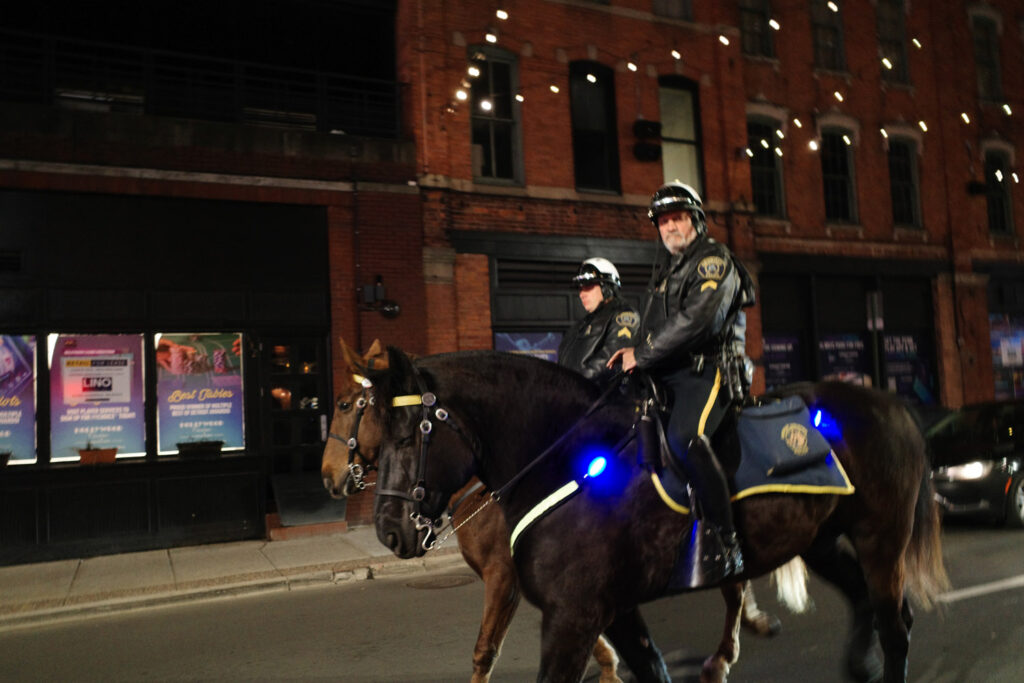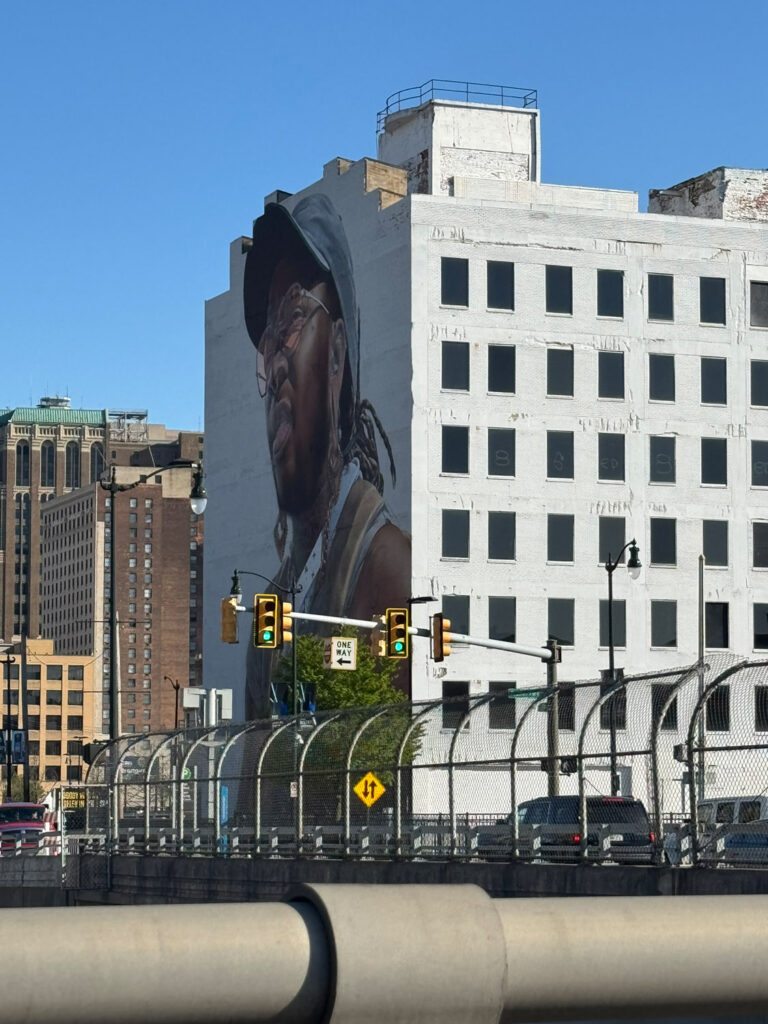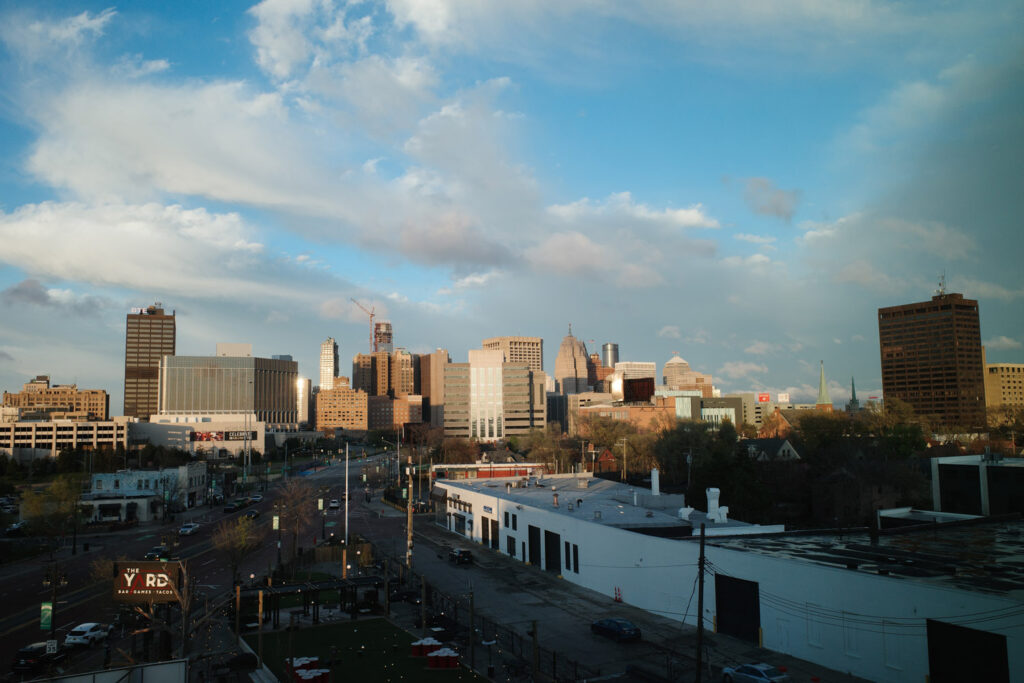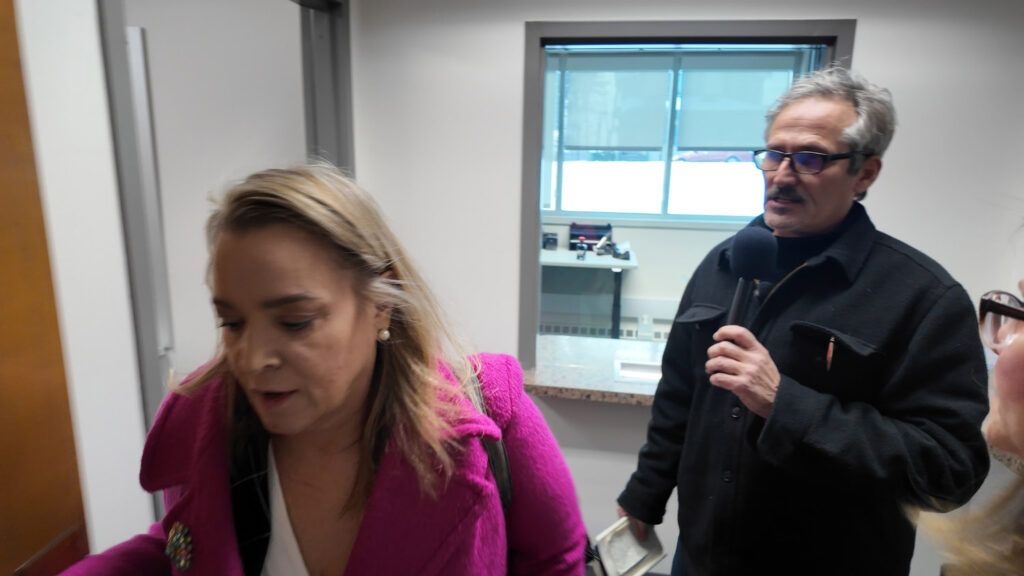There’s an old tale from Russia about an advisor to the Empress—one Grigory Potemkin—who, eager to impress her, constructed an elaborate series of fake villages up and down the Dnieper River. As her boat passed by their wooden facades, attendants would strike them, cart them further downriver, and erect them again. The tale is apocryphal, of course, but the concept is now known as a “Potemkin Village,” a false facade of prosperity masking nothingness.
Downtown Detroit has become a Potemkin Village.
It isn’t a “real” place anymore. It’s more of an idea, a concept, a liminal space. Sure, the buildings are real, but they’re hollow—both literally and figuratively—balloons occasionally filled with the hot air of exhaled breath. A rentable city, a big pavilion available for events that crave association with classic Americana, like the NFL Draft.
Took a walk downtown. Empty on a Friday night. Drawn to a highly rated Greek restaurant by a Google profile showing classic Greek diner aesthetic, old-world kitschy charm, red and white tablecloths, that sort of thing. Walked in and spit took—it’d been yassified! The walls were now millennial gray, the tables sparkling white, the speakers playing R&B.
We were one of only two parties in the place, practically empty on a Friday night, right in the middle of downtown. The food was good, but I got sick the next day. Too much grease, too much ouzo. My body rejected the new Detroit as something indigestible.

Outside the restaurant, walking the street—few citizens, if any, but plenty of cops. Cops on horses, cops on cars, cops on foot patrol. Outdoor metal detectors on the sidewalk. Asked an officer, “Why don’t people just sidestep it and walk on the other half of the sidewalk?” He shrugged his shoulders. A portable police tower loomed from down the street, raised up to full height with bright lights and cameras in every direction.
At least when Potemkin made his fake villages, he forced his uniformed men to dress like peasants to give it the illusion of reality. Detroit fills the downtown with uniformed police officers, like extras, to give the sense of activity just as much as security. There were more cops than people downtown, but on a visit to the rougher neighborhoods in the outskirts, I didn’t see a single one.
Corktown was also strangely empty, even the day before the draft. Wide paved streets with only a few cars on them. A fancy hotel, the menu giving nod to all manner of Detroit tropes and aesthetics. Ordered up the key lime pie, expecting it to be an actual slice of pie. What arrived was some sort of deconstructed pie in bits—the pie itself and shards of crust and whipped cream spread across the plate haphazardly. Hollow, deconstructed, deflated… just like the city.
An Italian coffee shop the next day. Truly excellent coffee, a great cannoli, but I was the only Italian in the place. That’s okay. They can appropriate my culture, so long as they can pull off the execution. Sat in the window and stared down the empty street the day before the draft, a major televised event. Still totally empty. In the next 24 hours, it would fill up with 700,000 people, who would vanish as soon as they’d come, like guests in an Airbnb.

Detroit is an image, not a city. That’s why it’s so important that it seems prosperous, that it seems alive again. The narrative must remain one of regeneration, new life, for brands to seize on it. No matter that it’s fake, if it exists entirely for the perception of outsiders.
There was a moment, perhaps 10 years ago, when the hipsters eagerly proclaimed, “Detroit is Back!” The most daring among them moved in, eager for cheap rent and perceived cultural ingenuity. Some even bought old row houses and fixed them up, often the only buildings left on whole blocks, now gone to pasture.
Not many stayed—it was a flash in the pan. Why did they leave? People blame the crime, the lack of jobs, the general state of malaise and decay. That doesn’t hold water, though. In all honesty, those sorts of hipsters love ruins, are tenuously employed, have plenty of family money, and are predisposed to ignore urban crime for ideological reasons.
What they can’t stand, however, is emptiness. They glamorize everything besides what they are. They can’t sit still. They must constantly encroach upon the next thing, the next photo opp, the next image of thriving uniqueness. Beyond that first ironic Instagram post, they quickly grew tired of the Lions games. The dive bars. The party stores. They quickly moved back to places where their newfound clout could be cashed in for currency.

You can only live so long on an idea alone. Detroit is an idea—“Imported from Detroit.” The Big Three automakers have some offices down there, but factories are nowhere to be found. Brands like Shinola, making expensive watches and home goods in Detroit. Artifices of luxury, the illusion of locality, without being truly meaningful. Eminem, 8 Mile—that movie’s 22 years old, and they still trot him out for every event, blank expression on his face, for anything that needs “Detroit” branding.
Downtown Detroit lacks a real physical center as well, something that would require people, but it sure has plenty of centers—Comerica, Ford Field, Little Caesars Arena, stadiums that fill up for events, then sit empty. Temporary stages and grandstands on the Campus Martius that give rise to a crowd, like for the NFL Draft.
We can bash the hipsters, but at least they tried. The answer for Detroit, like most other downtrodden Rust Belt cities, isn’t one of cultural regeneration via fixed wheel bikes and record players. The answer has to be, in the end, a profound shift in economic solidity. Factories perhaps—not even literally, but something of the sort, something generative and solidly grounded where people can make a living and prosper. Something new, without killing the realness of the old.
This will need to come from the top, from major business enterprises as well as government policy, as much as it will come from the bottom, from individuals daring to embark on new opportunities and, most importantly, doing it while staying put. More than anything, Detroit needs citizens, it needs Detroiters, and those people won’t come arbitrarily. They need livelihoods beyond shallow hipster irony which will never stick. They need something real, not the hollow shade of subterfuge that looms over present day Detroit. They need a city. Not the projection of one.
Bobby Mars is an artist, alter ego, and former art professor. Follow him on X at @bobby_on_mars.



